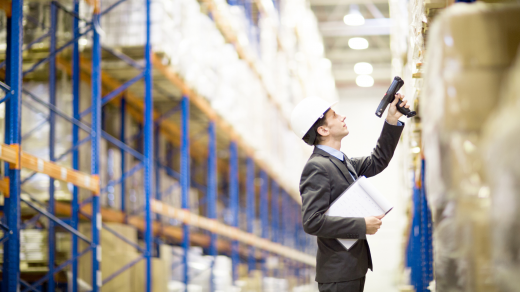Thermoplastics have become an integral part of the rail and public transport systems, providing lightweight and durable components for a variety of applications. From electrical wiring to structural components, they offer superior strength and flexibility when compared to traditional materials like metal or wood.
In situations of mass transportation, thermoplastics are invaluable to avoid having to replace seating and tables too often. They are used, in particular, for rail interior materials. You will no doubt have come across them if you are a regular commuter.
When it comes to the manufacturing of products used in rail or mass travel, thermoplastics play an important role in ensuring efficiency, safety, and durability. Whether it’s manufacturing seat frames, window frames, or even structural components, thermoplastics provide the strength and flexibility needed to withstand the rigors of daily use while meeting stringent safety standards.
In addition, their resistance to corrosion and harsh environmental conditions makes them well-suited for outdoor applications, such as signage and exterior panels. Hydraflex provides a wide variety of gas hoses, showcasing the versatility of thermoplastics in ensuring the reliability and safety of critical systems within rail and mass transit vehicles. By making use of the unique properties of thermoplastics, manufacturers can continue to innovate and improve the quality and performance of products used in rail and mass travel, ultimately enhancing the passenger experience and ensuring the longevity of transportation infrastructure.
In this article, we will explore some common thermoplastic products used in rail or mass travel situations, in addition to their advantages over other materials. We will also discuss the challenges associated with thermoplastic manufacturing for use in these types of transportation applications. Finally, we will provide insight into how the material can be used safely and effectively within the sector.
Use of Thermoplastics in Transport Systems
Common thermoplastic products used in rail or travel systems include:
- Electrical wiring insulation, can provide superior electrical protection and increased longevity compared to other materials.
- Structural components such as seating, support beams, and wheel bogies are lightweight yet strong enough to withstand the demands of rail or public transport.
- Exterior components such as fenders and side panels provide a low-weight solution while offering superior scratch, dent, and impact resistance.
It is useful to see what rival train companies are doing to see what is working for them. Or indeed, those in other parts of the world. This will help us decide just how much to embrace thermoplastics as a solution.
Advantages of Thermoplastics in Rail or Mass Travel Systems
The advantages thermoplastics offer over traditional materials are numerous. They are lightweight, durable, easy to fabricate, and can be designed to meet stringent performance requirements.
The lightweight and high-strength properties of thermoplastics make them ideal for use in aircraft components as well as rail travel, contributing to enhanced fuel efficiency and overall performance. In the realm of rail or mass travel, these same attributes are increasingly sought after for similar reasons.
Companies like Pilot John International usually sell aircraft parts and products that are made with these thermoplastics. From interior panels to structural elements, thermoplastics are utilized in the construction of aircraft cabins to reduce weight without compromising on safety or comfort. Furthermore, their ability to be molded into complex shapes allows for greater design flexibility, enabling manufacturers to optimize space and improve passenger experience.
Additionally, thermoplastics are corrosion-resistant and require minimal maintenance over their lifetime.
Challenges of Thermoplastic Manufacturing
The manufacturing of thermoplastics for applications in rail or mass transit systems is a complex undertaking, laden with challenges arising from the demanding conditions of high temperatures and pressures inherent in these transportation environments. The intricacies involved in creating thermoplastics suitable for such purposes necessitate the utilization of cutting-edge manufacturing techniques. This ensures that the final products not only meet but exceed the stringent requirements essential for withstanding the rigors of rail or public transport systems.
One crucial aspect in the successful execution of this intricate manufacturing process is the workforce. The sheer scale and technicality of thermoplastics manufacturing for transportation applications require a skilled and dedicated workforce. One effective approach to acquiring the necessary talent is through collaboration with a reputed industrial staffing company. These specialized agencies often excel in identifying, recruiting, and placing qualified personnel with the precise skills and expertise demanded by the thermoplastics manufacturing sector.
By partnering with an industrial staffing company, manufacturers in this field can access a pool of experienced professionals who understand the nuances of working with high-temperature and high-pressure materials. This not only streamlines the hiring process but also ensures that the workforce is adept at employing the latest manufacturing techniques, contributing to the production of thermoplastics that meet the exacting standards of the rail and mass transit industry.
Safety and Regulations
In the thermoplastics manufacturing process, it’s crucial to employ proper safety methods, such as hose shielding for hot pipes to prevent direct contact. Additionally, workers should be equipped with adequate protective gear for the safe handling of molten plastic, and cooling facilities must also be in place to minimize the risk of overheating.
For thermoplastic components used in rail or mass travel systems, strict adherence to safety guidelines and regulations set by governing bodies is imperative. This involves implementing design requirements and testing protocols to ensure that components meet or surpass performance expectations.
After manufacturing, the produced materials must be non-toxic, flame retardant, and inherently safe for use in these applications. This is essential to uphold safety standards and prevent potential hazards.
Transport companies need to adopt a preventative approach to minimize incidents that could arise from their interiors. This approach involves finding cost-effective solutions that prioritize safety without compromising on quality. Safety should always remain the top priority, even as efforts are made to keep transportation costs affordable.
Conclusion
So thermoplastics offer numerous benefits when used in rail or mass travel systems. They provide a lightweight and durable solution that is corrosion-resistant and require minimal maintenance over their lifetime.
Furthermore, they can meet strict safety regulations when this will be a consideration.
By leveraging such products, manufacturers can provide superior solutions for rail or public transport needs. They can please budgets when replacements are not required so often and customers can appreciate the material as being practical and aesthetically nice to look at.
The combination of durable thermoplastics and material on a seat will look nice and can be something that a particular network is known for providing.





